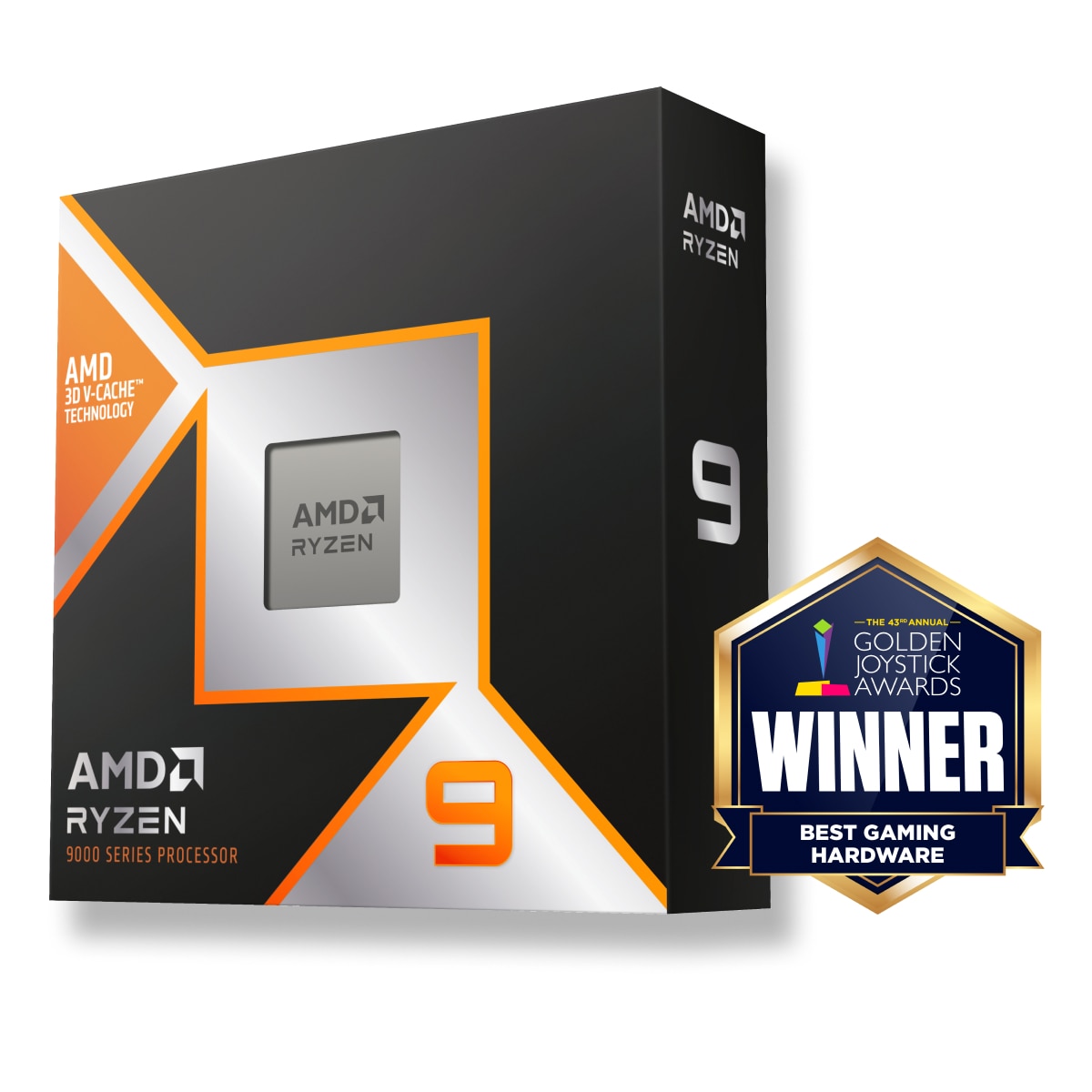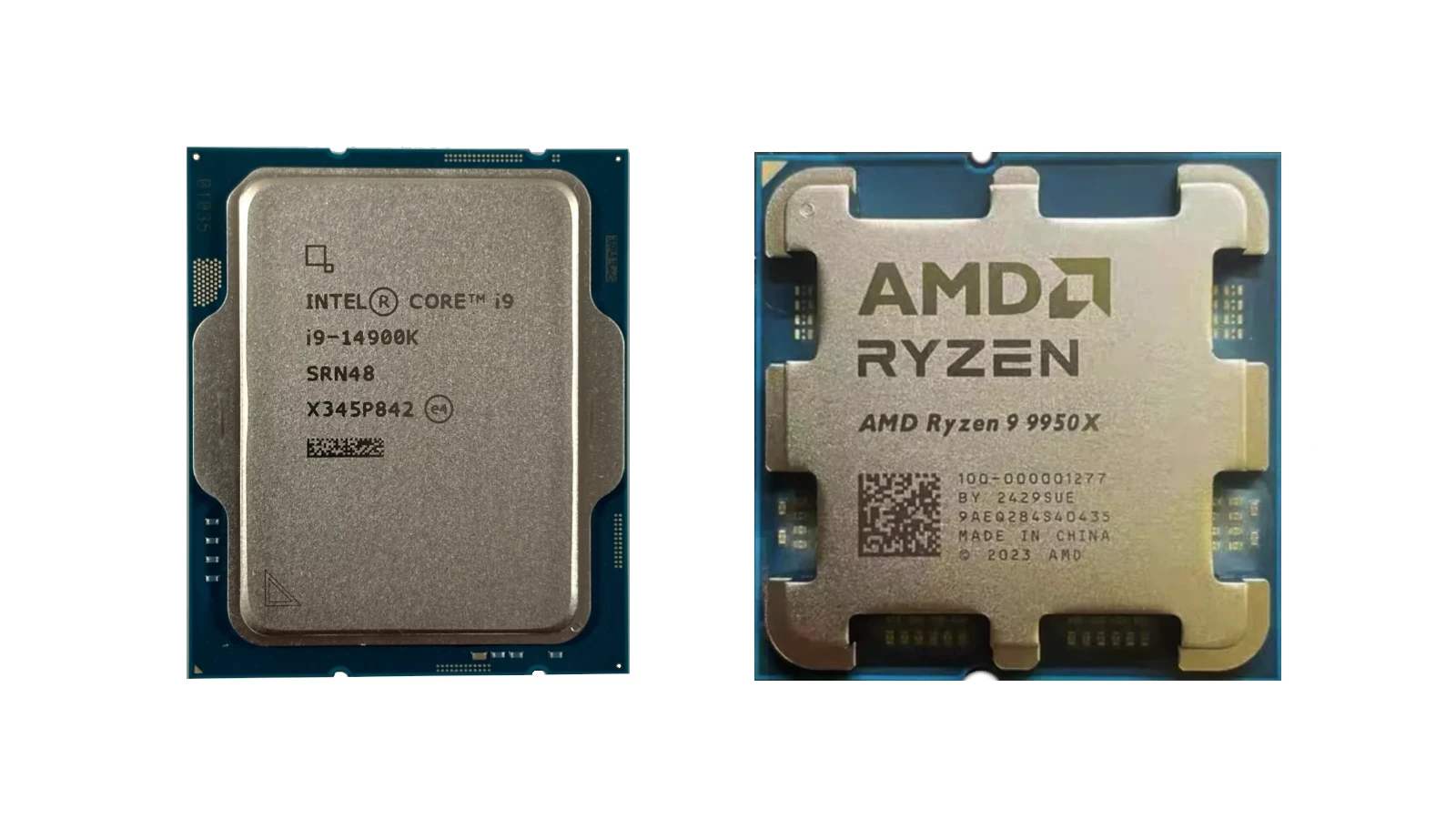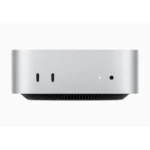In 2025, the race for computing supremacy is more competitive than ever. With generational leaps in AI acceleration, 3D chip stacking, and energy efficiency, both AMD and Intel are pushing the limits of what desktop and mobile processors can do. Whether you’re gaming at ultra settings, training AI models, running virtual machines, or working with massive 8K video files, there’s now a processor finely tuned to your specific needs.
Below is a refreshed and enhanced breakdown of the top-performing processors of 2025, with key insights into how each excels and where they fit best.
Best Overall Performance CPU (Desktop)
AMD Ryzen 9 9950X3D
The Ultimate Hybrid for Gamers and Creators

- Architecture: Zen 5 + 3D V-Cache 2nd Gen
- Cores/Threads: 16C / 32T
- Base/Boost Clock: 4.3GHz / 5.7GHz
- Cache: 144MB (64MB L3 stacked with 3D V-Cache)
- TDP: 170W
Why It’s Great:
With its stacked L3 cache and improved instructions-per-clock from Zen 5, the 9950X3D is AMD’s answer to high-demand users who need excellence in both gaming and content creation. It beats the i9-14900KS in many gaming benchmarks while also handling Adobe Premiere Pro and Blender workloads without breaking a sweat.
Best For:
- High-end 4K/8K gaming
- Video editing & rendering
- AI inference tasks
- Mixed creative workloads
Best High-End Intel Chip
Intel Core i9-14900KS
Peak Clock Speed Champion
- Architecture: Raptor Lake Refresh
- Cores/Threads: 24C / 32T (8 Performance + 16 Efficient)
- Boost Clock: 6.2GHz (single core)
- TDP: ~150W (can peak over 250W under load)
Why It’s Great:
This chip remains the king of single-threaded performance in 2025. Its absurd 6.2GHz boost clock makes it ideal for lightly threaded workloads like competitive gaming, emulation, and certain creative software that doesn’t scale well across cores.
Best For:
- Competitive eSports gamers
- Engineering software (AutoCAD, SolidWorks)
- Legacy application developers
- Enthusiasts and overclockers
Best for AI & Heavy Multithreaded Workloads
AMD Ryzen Threadripper Pro 7995WX
The Multicore Juggernaut
- Architecture: Zen 4-based (Pro Series)
- Cores/Threads: 96C / 192T
- Base/Boost Clock: 2.5GHz / 5.1GHz
- Cache: 480MB total
- TDP: 350W
Why It’s Great:
Built for high-end workstations, the 7995WX obliterates multi-core benchmarks. It’s specifically designed for professionals in VFX, scientific computing, and machine learning. Expect industry-leading compile times, simulation throughput, and model training speeds.
Best For:
- AI/ML model development
- Virtualization & container farms
- Film/VFX post-production
- Scientific research labs
Best Laptop Processor (Mobile Workstation)
Apple M4 Max (MacBook Pro 2025)
Workstation Power in a Portable Form
- CPU: 12-core (8 performance + 4 efficiency)
- GPU: Up to 38-core
- Neural Engine: 16-core
- Unified Memory: Up to 128GB
- Memory Bandwidth: 400GB/s
Why It’s Great:
The M4 Max is the fastest chip Apple has ever put in a laptop. Built on TSMC’s second-gen 3nm node, it blends power efficiency with high thermal performance, allowing pros to render 4K videos or run machine learning models on battery alone.
Best For:
- Video editors using Final Cut Pro or DaVinci Resolve
- Xcode developers
- Music producers
- Researchers using Apple’s Core ML frameworks
Best Value-for-Performance CPU
AMD Ryzen 7 9700X
Mainstream Sweet Spot
- Architecture: Zen 5
- Cores/Threads: 8C / 16T
- Base/Boost Clock: 4.5GHz / 5.5GHz
- Cache: 40MB total
- TDP: 65W
Why It’s Great:
This chip offers near flagship-tier gaming performance while costing less than half the price of a Ryzen 9. With Zen 5’s IPC uplift and thermal efficiency, it’s perfect for gamers and creatives who want top performance without a massive budget.
Best For:
- 1440p and 4K gaming
- Streaming and recording
- Everyday productivity
- First-time PC builders
Best for Developers & Compilation Tasks
Apple M3 Ultra (Mac Studio 2025)
The Efficiency Beast for macOS Power Users
- CPU: 32-core
- GPU: 80-core
- Neural Engine: 32-core
- Unified Memory: Up to 512GB
- Memory Bandwidth: 800 GB/s
Why It’s Great:
The M3 Ultra delivers an unmatched balance of power, cooling, and silence. Perfect for software engineers compiling large codebases, running dev containers, or working with massive media projects—all within macOS.
Best For:
- macOS application development
- High-performance computing (HPC) on Mac
- Large-scale media production
- Quiet, power-efficient workstations
Summary Table
| Processor | Cores/Threads | Boost Clock | Best For |
|---|---|---|---|
| AMD Ryzen 9 9950X3D | 16 / 32 | 5.7GHz | Gaming + Creative Work |
| Intel Core i9-14900KS | 24 / 32 | 6.2GHz | Gaming, Single-threaded Tasks |
| AMD Threadripper 7995WX | 96 / 192 | 5.1GHz | AI, Simulations, Render Farms |
| Apple M4 Max | 12 CPU / 38 GPU | N/A | Mobile Editing, ML, macOS Creators |
| AMD Ryzen 7 9700X | 8 / 16 | 5.5GHz | Gaming, Streaming, Mid-Range Workloads |
| Apple M3 Ultra | 32 CPU / 80 GPU | N/A | macOS Workstations, Compilation, Final Cut |
In short, 2025 offers more tailored CPU options than ever before—whether you’re building a $3000 workstation or optimizing a $1200 gaming rig. Make your decision based not just on benchmarks, but on your real-world workload, OS ecosystem, and future scalability.
Our Two Favorite AMD Choices
Choosing a processor is one of the most important decisions when building a computer. The right CPU affects everything from gaming performance to how quickly you can edit videos or run multiple programs. The Ryzen 9000 X3D series currently stands as the fastest gaming chip on the market in 2025, with options including the 9800X3D, 9900X3D, and 9950X3D.
AMD Ryzen 7 9800X3D
The AMD Ryzen 7 9800X3D stands as the best gaming CPU available in 2025. Built on AMD’s Zen 5 architecture, this processor delivers exceptional gaming performance that outpaces its competitors.
Performance tests show the 9800X3D is approximately 11.4% faster in gaming at 1080p than its predecessor, the 7800X3D. This improvement comes from AMD’s innovative 3D V-Cache technology that speeds up game performance.
Unlike some high-end processors, the 9800X3D doesn’t need extreme cooling solutions. It runs efficiently while still providing top-tier performance for gamers who want the best experience possible.
One key benefit is that the 9800X3D is unlocked for overclocking. This feature lets users push the processor beyond its factory settings for even better performance if they choose to do so.
The processor beats competing options like the Intel Core Ultra 9 285K in gaming tests. For serious gamers who want maximum frame rates, the 9800X3D is hard to beat.
It’s worth noting that performance gains are most noticeable at 1080p resolution. At higher resolutions, the difference might be smaller since graphics cards become the limiting factor.
Power consumption is higher than the previous generation, using about 45% more power on average. However, this trade-off brings significant performance improvements that many gamers find worthwhile.
The Ryzen 7 9800X3D works with AM5 motherboards, continuing AMD’s commitment to platform compatibility. This makes it easier for users to upgrade without replacing their entire system.
For pure gaming builds, few processors can match what the 9800X3D offers. It hits the sweet spot of excellent gaming performance without requiring extreme cooling or power delivery systems.
AMD Ryzen 9 9950X3D
The AMD Ryzen 9 9950X3D is a cutting-edge processor that has made waves in the high-end CPU market. Built on the new Zen 5 architecture, this chip packs 16 cores and 32 threads with a massive 144 MB of total cache.
Its peak boost clock reaches an impressive 5.7 GHz, making it one of the fastest desktop processors available today. This CPU aims to deliver the best of both worlds – top gaming performance and excellent productivity capabilities.
The 9950X3D shows stunning gaming performance in benchmarks, nearly matching its gaming-focused sibling, the 9800X3D. What makes this special is that it does so while also offering much better multi-threaded performance for work tasks.
AMD fixed previous issues through chipset driver updates. Tests show it’s now as fast as the 9800X3D in games while maintaining the multi-threaded performance of the standard 9950X.
Reviewers call it “the best dual-CCD processor AMD has released” – a testament to how well it handles different types of workloads. The chip simply works, and it works exceptionally well.
Gaming benchmarks place the 9950X3D with the second-highest CPU scores, trailing the 9800X3D by only a handful of frames. This makes it a compelling choice for gamers who also need strong productivity performance.
Many tech reviewers consider it among the best CPUs currently available, especially for users who want a no-compromise system that excels at both gaming and content creation.
The processor uses AMD’s 3D V-Cache technology, which adds extra cache to boost gaming performance. This technology has proven effective in previous models and continues to shine in the 9950X3D.
For power users who run multiple applications simultaneously, the high core count and thread count make the 9950X3D an excellent choice. Video editors, 3D artists, and streamers will appreciate its multitasking abilities.
While not the most power-efficient CPU, the performance gains typically justify the extra power draw for most high-end users looking for maximum performance.
Understanding Processor Specifications
Choosing the right processor requires understanding key specifications that determine performance. These specs help you compare different CPUs and find one that meets your computing needs.
Clock Speed and Its Impact
Clock speed measures how many processing cycles a CPU can complete per second, expressed in gigahertz (GHz). A 3.2 GHz processor completes 3.2 billion cycles each second.
Higher clock speeds generally mean faster performance for single-threaded tasks like gaming and basic applications. A CPU running at 4.0 GHz will typically outperform one at 3.0 GHz in tasks that don’t use multiple cores.
Base vs. Boost Speed:
- Base speed: The guaranteed minimum speed
- Boost speed: Temporary higher speeds when thermal conditions allow
Clock speed isn’t everything though. A newer CPU at 3.0 GHz might outperform an older one at 4.0 GHz due to architecture improvements that make each cycle more efficient.
Core Count and Multithreading
Modern CPUs contain multiple processing units called cores. Each core acts like a separate processor, allowing the CPU to handle multiple tasks at once.
Core count directly impacts multitasking and performance in multi-threaded applications like video editing and 3D rendering. A 6-core processor can handle 6 independent tasks simultaneously.
Multithreading technologies (like Intel’s Hyper-Threading or AMD’s SMT) create two logical processors per physical core. This allows each core to handle two instruction streams at once.
For everyday use, 6 cores is typically sufficient. Content creators and power users benefit from 8+ cores. Gaming performance depends more on single-core speed than core count, though newer games are starting to use more cores.
The best processors balance core count with good clock speeds to handle both single and multi-threaded workloads effectively.
Innovations in Processor Technology
Processor technology continues to evolve rapidly with significant breakthroughs in integrated graphics and AI capabilities. These advancements are changing how computers handle complex tasks and improving overall performance.
Advancements in Integrated Graphics
Modern CPUs now feature powerful integrated graphics that rival dedicated cards. Intel’s latest processors include Xe graphics architecture, which offers dramatically improved gaming performance without a separate GPU.
AMD has pushed boundaries with their RDNA architecture in Ryzen chips. These integrated solutions can now handle 1080p gaming and creative tasks that once required discrete graphics cards.
The newest integrated GPUs support advanced features like:
- Ray tracing capabilities
- AI-enhanced upscaling
- Hardware video encoding/decoding
- Variable rate shading
3D stacking technology has allowed manufacturers to place high-bandwidth memory directly on the CPU die. This innovation cuts the distance data must travel, boosting graphics performance significantly.
These improvements mean budget computers can now handle tasks that previously required expensive setups. Video editing, 3D modeling, and casual gaming are now possible on standard laptops.
AI and Machine Learning Capabilities
Processors now include dedicated AI accelerators that speed up machine learning tasks. These neural processing units (NPUs) handle AI workloads without taxing the main CPU cores.
Intel’s Lunar Lake chips feature enhanced AI engines that can process up to 45 TOPS (trillion operations per second). AMD has also developed robust AI accelerators in their latest CPUs, competing strongly in this growing field.
Key AI processor innovations include:
| Feature | Benefit |
|---|---|
| Dedicated AI cores | 5-10x faster AI processing |
| Low-precision computing | More efficient power usage |
| On-chip machine learning | Improved privacy and speed |
These capabilities enable real-time language translation, photo enhancement, and smart productivity features. Everyday tasks like voice recognition and predictive text now happen instantly on your device.
Extreme Ultraviolet Lithography has allowed chip makers to create smaller, more efficient AI processing units. This manufacturing breakthrough packs more AI power into compact chips.
Frequently Asked Questions
People often need specific information when choosing processors for different devices and uses. CPUs vary widely in performance, features, and compatibility across gaming PCs, laptops, smartphones, and other devices.
What is the highest performing CPU for gaming currently available?
The AMD Ryzen 7 9800X3D stands as the top gaming CPU on the market today. It offers exceptional gaming performance with its 3D V-Cache technology.
This processor delivers outstanding frame rates in most modern games. The 3D stacked cache gives it an edge in gaming workloads compared to other high-end CPUs.
Gamers looking for the absolute best gaming performance will find the 9800X3D worth the premium price. It shines particularly in CPU-bound games that benefit from its large cache.
Which laptop CPU offers the best performance for professional applications?
The Intel Core i7-12700KF offers excellent performance for professional laptop applications. This processor balances power efficiency with strong multi-core performance.
Professional users will appreciate its ability to handle demanding tasks like video editing and 3D rendering. The hybrid core architecture combines performance and efficiency cores for better battery life without sacrificing speed.
Many high-end laptops featuring this CPU can rival desktop systems in productivity benchmarks. For professionals who need mobility without compromise, laptops with this processor are worth considering.
How does processor choice impact overall PC performance?
A processor serves as the brain of your computer, affecting everything from startup times to multitasking capabilities. CPU selection directly impacts how quickly your computer can process instructions.
The number of cores and clock speed determine how many tasks your computer can handle at once. Higher core counts benefit multi-tasking and content creation, while faster clock speeds improve responsiveness in everyday tasks.
Budget options like the AMD Ryzen 5 7600 offer great value for everyday work use, while the Intel Core i5-13400F provides a good middle ground for mixed workloads.
What are the top mobile processors for enhanced gaming experience on smartphones?
The MediaTek Dimensity 9400 leads mobile gaming processors with its powerful GPU and efficient design. This chip delivers console-quality graphics while maintaining good battery life.
It supports high refresh rate displays up to 180Hz for smoother gameplay. The processor also includes AI acceleration features that enhance gaming visuals and performance.
Heat management in the Dimensity 9400 is significantly improved over previous generations, allowing for sustained performance during long gaming sessions.
What are the leading processors for Android devices?
Qualcomm’s Snapdragon 8 Gen 3 dominates the premium Android market with exceptional performance and efficiency. This chip powers many flagship phones released in 2025.
MediaTek’s Dimensity 9400 offers strong competition with competitive pricing and excellent gaming capabilities. Many mid-range phones now feature this processor for better value.
Google’s Tensor G4 provides unique AI capabilities in Pixel devices, though raw performance lags behind competitors. Samsung’s Exynos processors continue to appear in select regional models of their flagship phones.
What are the key differences between Intel’s and AMD’s top-tier gaming CPUs?
Intel CPUs usually offer higher single-core performance, which benefits games that don’t use many cores. Their processors often reach higher clock speeds, which can help in certain gaming scenarios.
AMD provides better multi-core performance and value, with more cores at similar price points. The Ryzen 7 9800X3D specifically outperforms Intel in many games thanks to its larger cache design.
Power consumption also differs, with AMD generally offering better efficiency than comparable Intel chips. This means AMD systems often run cooler and require less robust cooling solutions.







